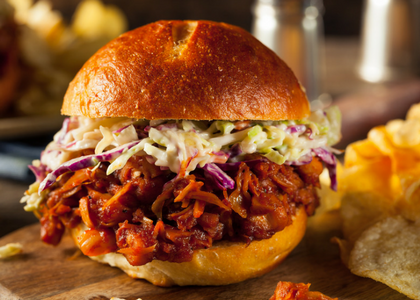
Trendy Food: The Wonders of Jackfruit
By Claire Georgiou, Reboot Naturopath, B.HSc ND
It is large, heavy, rough and smells like dirty socks, but it’s a potential food staple gold mine. Jackfruit grows easily in warmer climates and is pest and drought resistant. As the world’s largest fruit tree, once mature, it can produce up to 200 fruits a year and each fruit weighs between five to 100 pounds each.
With the warmer climate and unpredictable rainfall, wheat, corn and other crops are taking a beating, and jackfruit could be a global solution.
This versatile fruit is already an important culinary staple in many countries around the world including India, Bangladesh, Thailand and other Southeast Asian countries.
Jackfruit is a great source of protein, potassium, calcium and iron. One cup provides 740mg of potassium and 2.5g of fiber and 25 percent of your vitamin B6 needs plus magnesium, vitamin C and other B vitamins.
Ripe & Unripe
As an unripened fruit, it is used in savory dishes such as curries. The unripe variety has a mild flavor that has been likened to artichoke hearts or mushrooms and can be used in many savory Asian dishes.
When ripe, it’s used as a sweet fruit dish ingredient and tastes a little like banana, pineapple or mango, complementing any tropical fruit dishes.

How To Use It
Some vegetarians and vegans have described jackfruit as a plant-based pull pork substitute and food companies are making it with BBQ and Tex-Mex type sauces, selling it as a plant-based meat substitute convenience food. It is also marketed as a grain-free and gluten-free product.
Even the seeds of this fruit are edible. They are milky and similar to brazil nuts, containing protein and minerals. The seeds can be sun-dried and stored for later use or enjoyed in a variety of recipes where they are eaten roasted as a snack or added to stews and curries like lentils.
Where To Find It
You can find it in stores as freeze-dried, chips, noodles, flour, as ice-cream. Jackfruit can be found in some health stores or in Asian supermarkets and you can also find it canned in brine. In Australia, it can be found fresh in the warmer states such as Queensland.
While traveling in Asia, I would buy this fruit in stalls on the side of the road enjoying containers of the ripened fruit but I was happy not to cut it up as I’d been warned it wasn’t the most pleasant experience as the sap can be like white latex with a foul odor.